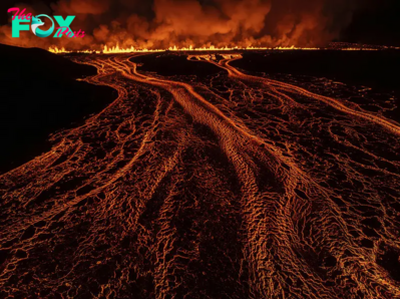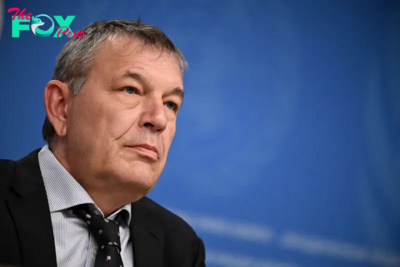World News
What to Know About Nowruz, a 3,000-Year-Old Festival Celebrated by Millions Worldwide
Some 300 million people around the world are starting their annual celebration of renewal and harmony with nature in what is to them the biggest cultural holiday of the year, typically involving 13 days of rituals.
Nowruz (alternatively spelled Nauruz, Nauryz, Navruz, Nevruz, Nooruz, Norooz, Norouz, or Novruz), also known as Persian New Year (Nowruz means “new day” in Persian), is celebrated across ethnic groups with a common Silk Roads heritage, including Afghanistan, India, Iran, Iraq, Kazakhstan, Pakistan, Tajikistan, and Turkey, as well as their diaspora in other countries.
The excitement for Nowruz was captured on Tuesday’s Google Doodle, which appeared on the site in more than a dozen countries, including Afghanistan, India, Pakistan, the United Kingdom, and the United States. (Access to Google is restricted in Iran.)
The colorful scene, featuring Animals playing instruments, was created by Iranian artist and Google Design Director Pendar Yousefi, who said the doodle draws inspiration from what he described as his “happy childhood memories of Nowruz.”
Here’s what to know about Nowruz:
When is Nowruz?
Nowruz, which marks the first day of spring, is celebrated at the time—down to the second—of the vernal equinox, the point at which the sun is equally aligned over the Northern and Southern hemispheres, based on the earth’s rotation and tilt.
When exactly Nowruz begins thus varies across countries, depending on time zones. This year, it takes place at 26 seconds past 6.36 a.m., March 20, in Tehran, Iran (11:06 p.m., March 19, EDT). In India, Nowruz is celebrated on two days, this year on March 20 and August 15, based on calculations according to two different calendars.
The United Nations declared March 21, when the vernal equinox usually occurs, to be the International Day of Nowruz in a 2010 resolution.
What are its origins?
Exactly when Nowruz began as a festival is unclear, though many believe it to date back around 3,000 years ago, with roots in Zoroastrianism, one of the world’s oldest monotheistic religions. Ancient texts suggest that Nowruz was celebrated in the ancient city of Persepolis, the ceremonial capital of the Achaemenid Empire which lasted from 550 to 330 BC.
There are several legends surrounding the origins of Nowruz that spotlight a particular heroic figure. In one, Jamshid, a mythical Persian king, soared into the skies on a chariot on the first day of spring, bringing such a majestic sight to onlookers on the ground that they started commemorating the day of that ride. Another version says that Jamshid was coMMAnded by a Zoroastrian deity to battle his twin brother, Ahriman, who represented darkness and death and had brought calamities. Jamshid defeated Ahriman—a triumph of good over evil—bringing prosperity to the place he ruled.
How is Nowruz celebrated today?
People typically spend weeks preparing for Nowruz, mostly by spring cleaning. During the festival, family visits and communal meals are common, along with gift exchanges.
There are also ways of celebrating that differ by country. In Afghanistan, people eat haft mewa, a dessert with syrup-soaked dried fruits, and play the national sport of buzkashi, which sees horse-riding players try to wrest control of a headless goat carcass.
In Azerbaijan, where Nowruz was once prohibited by the Soviet regime and celebrated in secret, rituals are held on four Tuesdays—each involving a different element: water, fire, earth, and wind—before the official start of Nowruz, heralding the beginning of spring.
In Iran, every celebrating family puts together a haft-seen, a table of items with symbolic, auspicious meanings, which include dried fruit, apples, garlic, vinegar, and sprouts that can grow through the festival as a sign of rebirth. The sprouts, or Sabze, are typically released into running water in nature on the last day of Nowruz.
How Nowruz is changing
Amid economic troubles and steep iNFLation, Nowruz celebrations in Iran in recent years have been marked by greater austerity. And as political tensions persist between hardline authorities and liberal youth in Iran, annual public dances celebrating Nowruz have become a symbol of defiance in a country where women dancing with men is frowned upon by conservatives.
Nowruz celebrants have also become increasingly concerned about climate change affecting the ancient festival, which is rooted in an appreciation and connection with nature. “Everywhere you look there are rising temperatures, lack of water, the depletion of natural species,” Persis Karim, director of the Center for Iranian Diaspora Studies at San Francisco State University, told the BBC this month. “Nowruz is now in some ways under threat, and it could be linked to an understanding about the vulnerability of our planet and our participation in that vulnerability.”
Despite, and even perhaps more importantly because of, the contemporary challenges the holiday faces, Nowruz has been increasingly recognized across the world. In 2009, Nowruz was inscribed on UNESCO’s Representative List of the Intangible Cultural Heritage of Humanity.
“At a time when violent extremism seeks to destroy diversity and freedoms,” then Director-General of UNESCO Irina Bokova said during Nowruz in 2017, “Nowruz is a reminder of the power of culture and heritage to build resilient and sustainable societies.”
-

 World News2d ago
World News2d agoLandmark Bill to Ban Children From Social Media Introduced in Australia’s Parliament
-

 World News2d ago
World News2d agoAmerican and Australian Tourists Die in Laos After Drinking Tainted Alcohol
-

 World News3d ago
World News3d agoSee Photos of the Seventh Volcanic Eruption on Iceland’s Reykjanes Peninsula in 12 Months
-

 World News3d ago
World News3d agoMuhammad Yunus on the Race to Build Bangladesh 2.0
-

 World News3d ago
World News3d agoU.S. Charges Indian Billionaire Gautam Adani With Defrauding Investors
-

 World News3d ago
World News3d agoU.S. Vetoes U.N. Resolution Demanding a Cease-Fire in Gaza
-

 World News3d ago
World News3d agoPutin Signs New Doctrine Lowering Nuclear Weapons Threshold in Warning to U.S.
-

 World News3d ago
World News3d agoTens of Thousands Rally at New Zealand’s Parliament in Support of Māori Rights



























